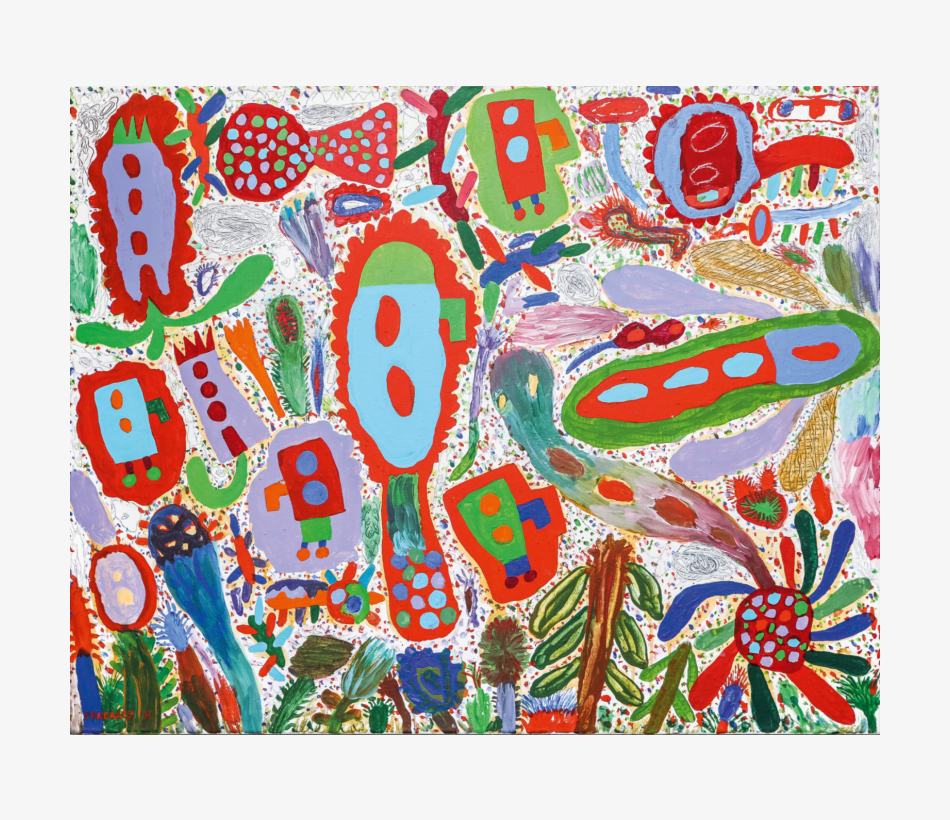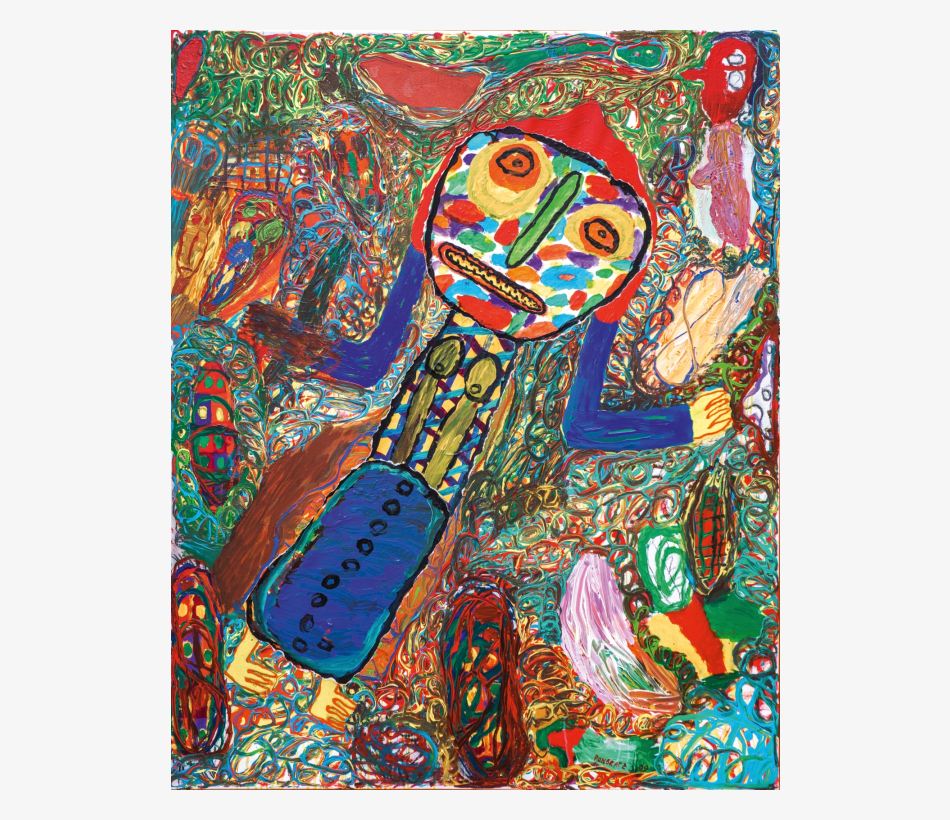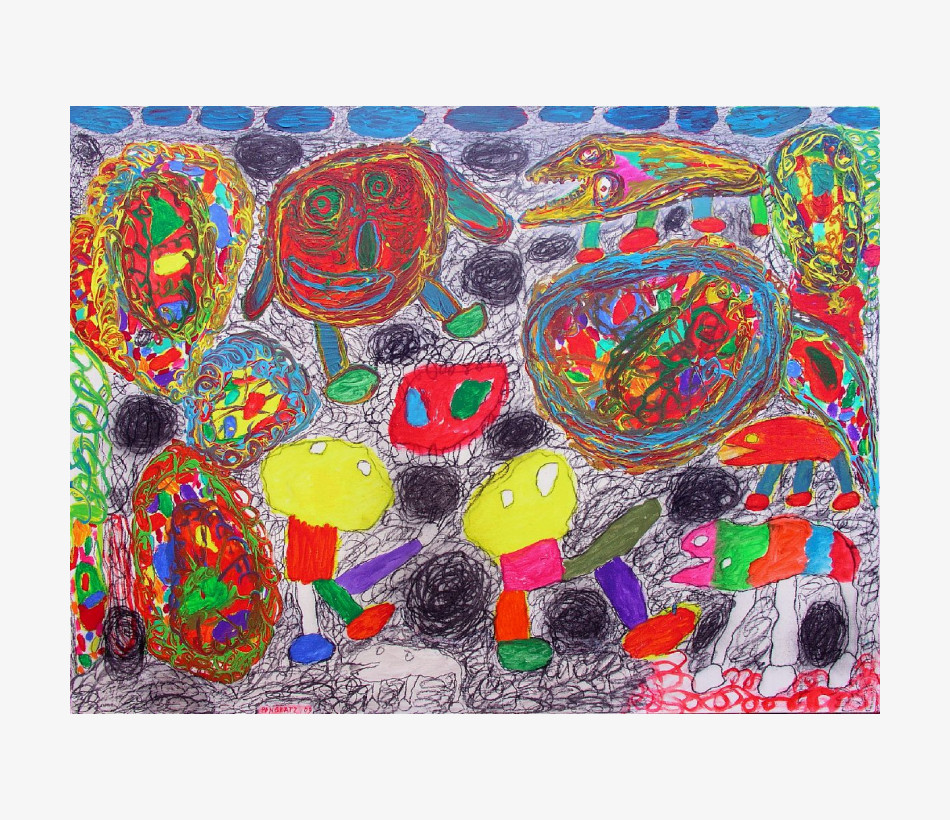Peter Pongratz started to develop an artistic counter-position in the 1960s. His work was situated along the borderline between abstract and representational painting, while also being inspired by Art Brut and his studies of the works of the artists of Gugging. In 1968, together with Wolfgang Herzig, Martha Jungwirth, Kurt Kocherscheidt, Franz Ringel and Robert Zeppel-Sperl, he founded Wirklichkeiten (Realities), a group that formed a counter-position to the movements of Informalism and Fantastic Realism that were active at the time. His oeuvre is characterised by several multifaceted phases and deliberately ignores any academic tendencies, standards and rules. The only permanent element in his work is constant change.
— Magdalena Koschat






